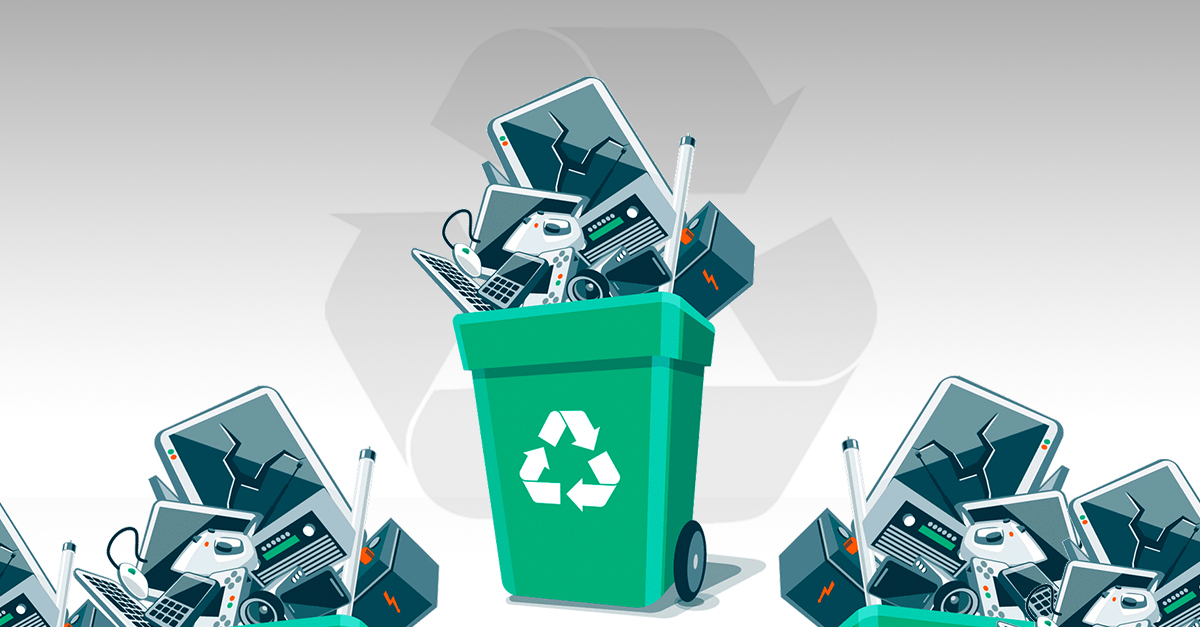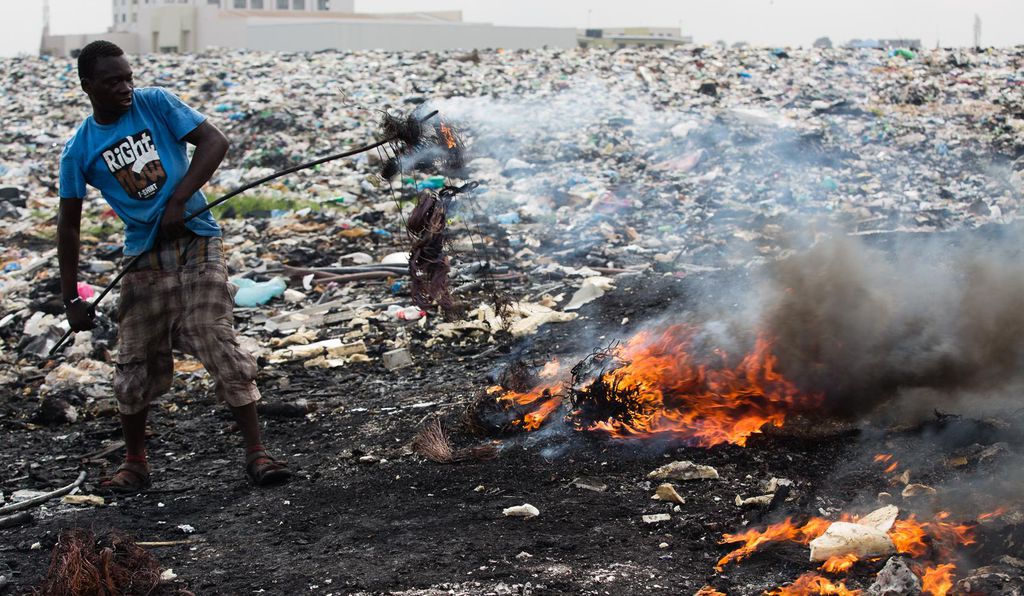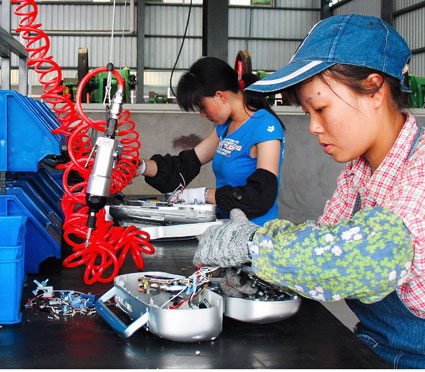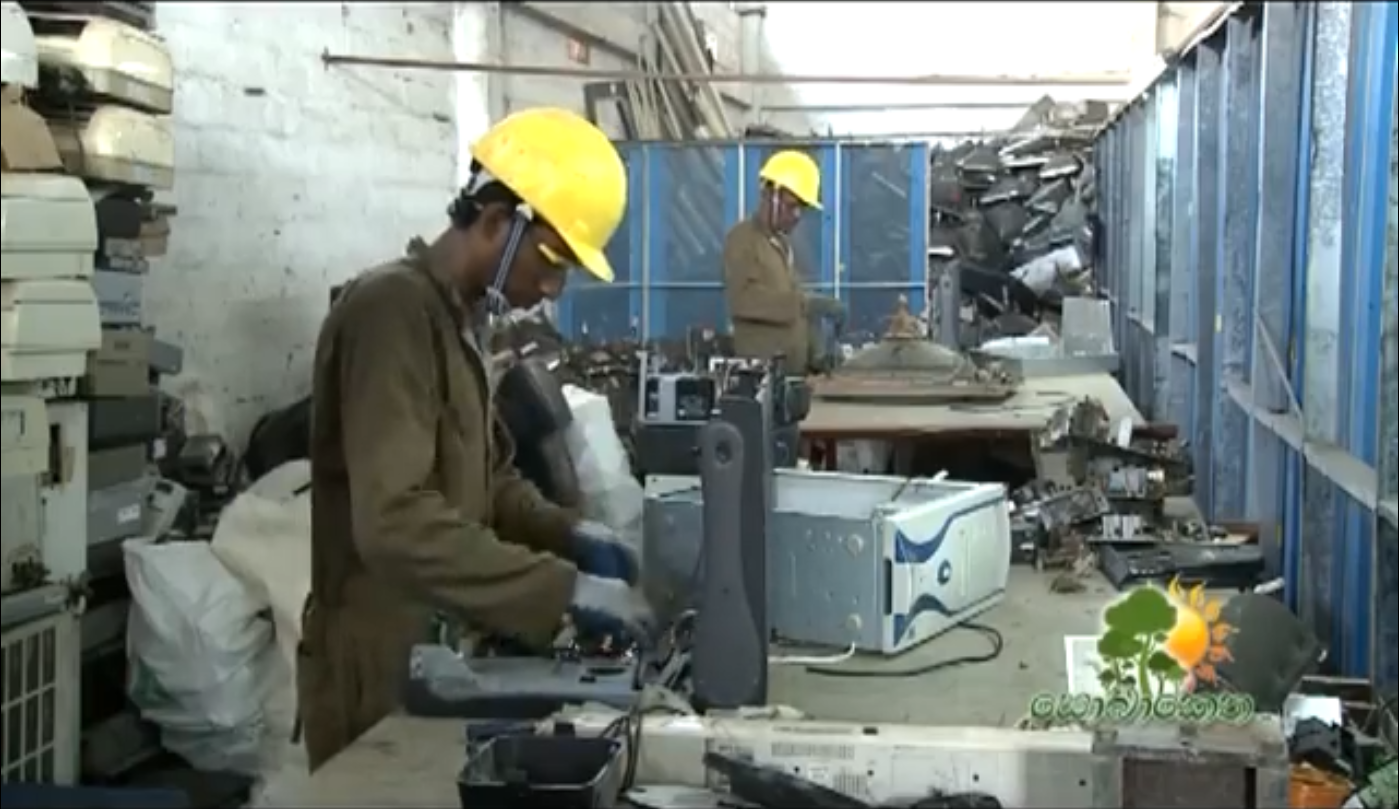
In each of our smartphones, there are myriad elements, each with a specific function that allows the device to operate. The chemicals that make up each of these elements are harmless in small quantities, but as more and more electronics are produced—and more thrown away—they pose a risk to our environment and health.
In the last two decades, the global growth in electrical and electronic equipment production and consumption has increased exponentially. This is largely due to the increasing market penetration of products in developing countries. Additionally, electronic products now have a high obsolescence rate, where devices are made to be quickly replaced with newer technology, creating a replacement market in developed countries. Together with a decrease in prices and a growth in internet use, these factors have led to an overconsumption of technology. It is estimated that the world generates around 20–50 million tonnes of e-waste annually, most of it from Asian countries.

The Central Environmental Authority (CEA) defines “electronic waste” as all obsolete electronic devices, such as computers, servers, mainframes, monitors, TVs & display devices as well as telecommunication devices such as cellular phones and pagers, calculators, audio and video devices, printers, scanners, copiers and fax machines. E-waste also covers recording devices such as DVDs, CDs, floppies, tapes, printing cartridges, automobile catalytic converters and electronic components such as chips, processors, motherboards, printed circuit boards and industrial electronics.
“With the steady growth of new technology and the extensive use of computers and electronic equipment, the quantity of electronic items for disposal shows a rapid increase globally,” said Charitha Herath, former Chairman of the CEA.

A 2016 study by the Global E-waste Monitor found that Asia was the region that generated by far the largest amount of e-waste (18.2 million tonnes), followed by Europe (12.3 Mt), the Americas (11.3 Mt), Africa (2.2 Mt), and Oceania (0.7 Mt). While Oceania recorded the least total e-waste generated, it was the highest generator of e-waste per inhabitant (17.3kg/inh), with only 6% of e-waste documented to be collected and recycled. Europe is the second largest generator of e-waste per inhabitant with an average of 16.6 kg/inh; however, Europe has the highest collection rate (35%). Of the 44.7 Mt of e-waste produced globally, only 8.9 Mt was documented to be collected and recycled, which corresponds to 20% of all the e-waste generated. The International Telecommunication Union has reported that at least $55 billion in recoverable materials is thrown away by failing to recycle all of that e-waste.

In Sri Lanka, mobile phone penetration increased from 96% to 126% from 2012 to 2017, while annual growth rates estimated for other major electronic items, such as personal computers, televisions, printers, and batteries increased from 4% to 10%. But policies to monitor e-waste disposal have been slow to catch up.
“There is no formal disposal system in Sri Lanka for e-waste. Thus, we burn plastic items and crush burnt-out bulbs,” said Herath. “Most hazardous waste matter is currently disposed of in a haphazard manner on roadsides, in dump yards and sometimes in home gardens.”
It is clear that there is an urgent need for a more concerted effort towards managing e-waste in Sri Lanka. “Most developed countries, and some developing countries such as South Africa, India, China, Malaysia and Thailand have developed national legislations and policies specifically for electronic waste management.” said Harshani Mallawarachchi, lecturer in Building Economics at the University of Moratuwa. “In Sri Lanka, apart from few existing regulations, a draft policy on effective electronic waste management processes remains to be implemented”
Currently, the three main steps to e-waste disposal are: collection, pre-processing (sorting/dismantling), and end-processing (refining/disposal). In a bid to promote proper disposal, the CEA has organised several e-waste drop-off events, at which the public is encouraged to hand over used e-waste items to the seller or producer. There are also e-waste collectors and exporters who are registered with the CEA, who are willing to go directly to the customer to buy back e-waste. Many of the chemicals extracted from e-waste can be recycled into new electronic products.

On the other hand, the hazardous material contained in e-waste include lead, mercury, cadmium, copper, gold, silver, Polychlorinated Biphenyl (PCB), and Brominated Flame Retardants (BFR). Lead and mercury are especially dangerous heavy metals, causing symptoms such as muscle pain, headaches, lung damage, nausea and diarrhoea. In large quantities, these chemicals can cause brain damage and death. Unless e-waste is processed, recycled or disposed of in a proper way, it can have serious impacts on human health as well as on the environment.
“Once toxic substances are exposed to the surrounding environment, they contaminate the air, soil and water sources, and could eventually enter the human body and other living organisms via ingestion of food, dust, water, inhalation of gases and particles in the air, and also through skin intake,” said Mallawarachchi. “As Sri Lanka is a tropical country, electronic items become e-waste at a high rate due to humidity, dust and temperature. Although imported e-items are of high quality, they cannot be durable if they are not tropicalised, ” she added.

One of the major challenges in e-waste disposal is recycling the printed circuit boards that contain precious metals such as gold, silver and platinum and base metals like copper, iron and aluminium. One method of disposal is by melting circuit boards, burning cable sheathing to recover copper wire and open-pit acid leaching for separating metals of value. Various other methods are used to separate the many components of e-waste. These include simple hand sorting, shredding and sifting, using magnets to separate certain metals, and water separation to remove plastic and glass components.
“Many companies have a general waste management policy, but not specifically for e-waste,” said Mallawarachchi. There is no doubt that there is a pressing need for comprehensive e-waste management in Sri Lanka, through a standardised collection method and the implementation of a national policy and strategy.
The Central Environmental Authority has a list of licensed collectors, which are authorised to dispose of E-waste.







